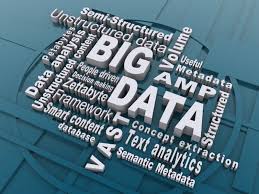
 "Big Data" is the next big thing among businesses of all stripes. The demand for people who can crunch and explain the data is growing exponentially, meaning there's some ripe opportunities for those entering marketing and communications fields.
"Big Data" is the next big thing among businesses of all stripes. The demand for people who can crunch and explain the data is growing exponentially, meaning there's some ripe opportunities for those entering marketing and communications fields.
According to an article in The New York Times, the demand for data scientists is growing, which has meant six-figure salaries for graduates with the right (data) stuff. The article said that the University of San Francisco will soon graduate its charter class of students with a master’s degree in analytics, while schools such as George Mason University, Northwestern, NYU, Stanford, Syracuse and University of California at Irvine all have data science tracks.
For communicators, access to Big Data means more of a drill-down than simply perusing Google Analytics for website metrics. It's finding patterns from customer purchasing habits or online behavior of social media users. As Mark Weiner, CEO of PRIME Research North America, told PR News recently, it's social media data that is giving PR pros a chance to compete with their marketing counterparts in terms of customer insights. "While representing a small percentage of marketing spend, social media PR, and the data that is culled from it, drives a disproportionate positive volume in sales," Weiner said.
What does this all mean for PR? If you're a up-and-coming communications pro with a penchant for math, statistics and science, a data-science focus sounds like a winning career path. For corporate PR pros diving deeper into data—whether big, medium or small—will help you gain better program results and improve PR's stead within the organization.
Not big on "Big Data" yet? Here are some tips on getting started, compliments of Mike McDougall, president of Rochester, N.Y.-based McDougall Communications:
1. Think trends, not snapshots: Looking at any given picture is interesting, but even more intriguing is viewing a series of pictures —of the same subject —that are accumulated over time. Similarly, pull together your data from months gone by to better understand the trends at hand, then project that momentum out another few months.
2. Get visual: Some of us can “see” figures coming to life directly from a quantitative report or spreadsheet. If you can’t, convert that data into something more visually complelling.
3. Start small: Don’t try to boil the ocean by attempting to put all of your data into the mix. Choose a few categories in which you truly understand the intrinsic relationship between what has occurred, and what that means for the future.
4. Find new application: Apply big data to new applications, including highly variable scenarios such as crisis communications. Sever months ago, a global brand found itself under attack by an online pundit, leading one of its agencies to immediately begin advocating for a full-blown response. We instead hit the pause button to see how the data played out over the next 90 minutes. Using real-time monitoring, the trend line soon indicated that the issue would run its course in a few hours—an instance where doing nothing trumped a knee-jerk reaction.
5. Evangelize: Your greatest challenge in advancing the power of "Big Data" may be inertia. Make the first move and retire antiquated reports that say little, weigh a lot and barely get read. Replace them with a couple of informed analyses of what’s to come, and watch eyes (and brains) light up.
Follow Scott Van Camp: @svancamp01

Thank you for this interesting post and helpful advice on getting started with “Big Data” in PR.
I find the use of big data in PR extremely exciting, not only in terms of its potential for more effective measurement but also in its ability to allow PRs new insights into their target audiences. After all, public relations should be about two-communication, informing and engaging key publics while also gathering feedback to understand perceptions and build stronger relationships with stakeholders. Big Data can do this in new and exciting ways and hopefully have the same impact on PR as it has had with marketing in terms of yielding market insights and predicting consumer behaviour. I will certainly be looking into master’s degrees in analytics and ways to apply “Big Data” to PR practice!